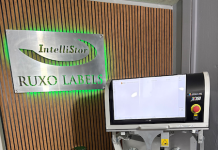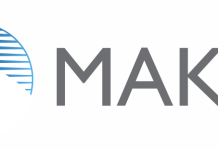Laurel Brunner from the Verdigris Project places much emphasis on CarbonCo’s offsetting programme. The organisation works with the World Land Trust to provide money to buy and protect land vulnerable to deforestation. The World Land Trust has Sir David Attenborough as patron and this year celebrates its 30th birthday.
The World Land Trust has a very simple but effective business model. It raises money to buy land so that the land, its ecosystems and wildlife can be protected. Over the last thirty years the organisation has acquired over 283,280 hectares (700,000 acres) of tropical forest in nearly twenty countries around the world. Through the World Land Trust’s purchases and protections, another four million acres have also come under protection of some sort.
It’s an amazing programme and one that graphics industry professionals and their customers can take part in. Companies from publishers and print buyers through to print service providers can specify carbon balanced paper for their print jobs. The printing generally costs a little bit more, but the extra money goes to World Land Trust projects that help keep the planet breathing. Print buyers might not squeal so much, if they trusted that some of the cost of paper is being used to protect the planet. And on the subject of paper prices, paper for the majority of commercial printing applications is cheap compared to what it cost thirty years ago.
The World Land Trust is urging print buyers to request CarbonCo certified materials. In the UK where both organisations are based, they are also working with local government and procurement. Andy Burnham, mayor of greater Manchester said that climate change is ‘bigger than any challenge… the future of our planet’. The city has plans to become climate neutral by 2038, which is twelve years ahead of the UK government’s pretty timid objective of 2050. Greater Manchester is working with a range of measures such as tree planting schemes, and not exclusively on the basis of offsetting and the World Land Trust partnership.
Environmental awareness at this level filters down supply chains to both service providers and end users. Opting for carbon balanced paper is just one of many small steps that we can all take in order to achieve a dramatic improvement in environmental impact reductions. Printers and publishers are well-placed to make a difference. It starts with choices about paper and decisions to support organisations such as the World Land Trust. Actually it starts with the choice to do something, anything, to reduce our greenhouse gas emissions and change our collective thinking.
This article was produced by the Verdigris Project, an industry initiative intended to raise awareness of print’s positive environmental impact. Verdigris is supported by: Agfa Graphics (www.Agfa.com), EFI (www.efi.com), FESPA (www.fespa.com), HP (www.hp.com), Kodak (www.Kodak.com/go/sustainability), Kornit (www.kornit.com), Practical Publishing (www.practicalpublishing.co.za), Ricoh (www.ricoh.com), Spindrift (https://spindrift.click/), Unity Publishing (http://unity-publishing.co.uk) and Xeikon (www.xeikon.com).
This work by the Verdigris Project is licenced under a Creative Commons attribution-noderivs 3.0 Unported licence http://creativecommons.org/licences/by-nd/3.0/
THE VERDIGRIS PROJECT http://verdigrisproject.com/





















